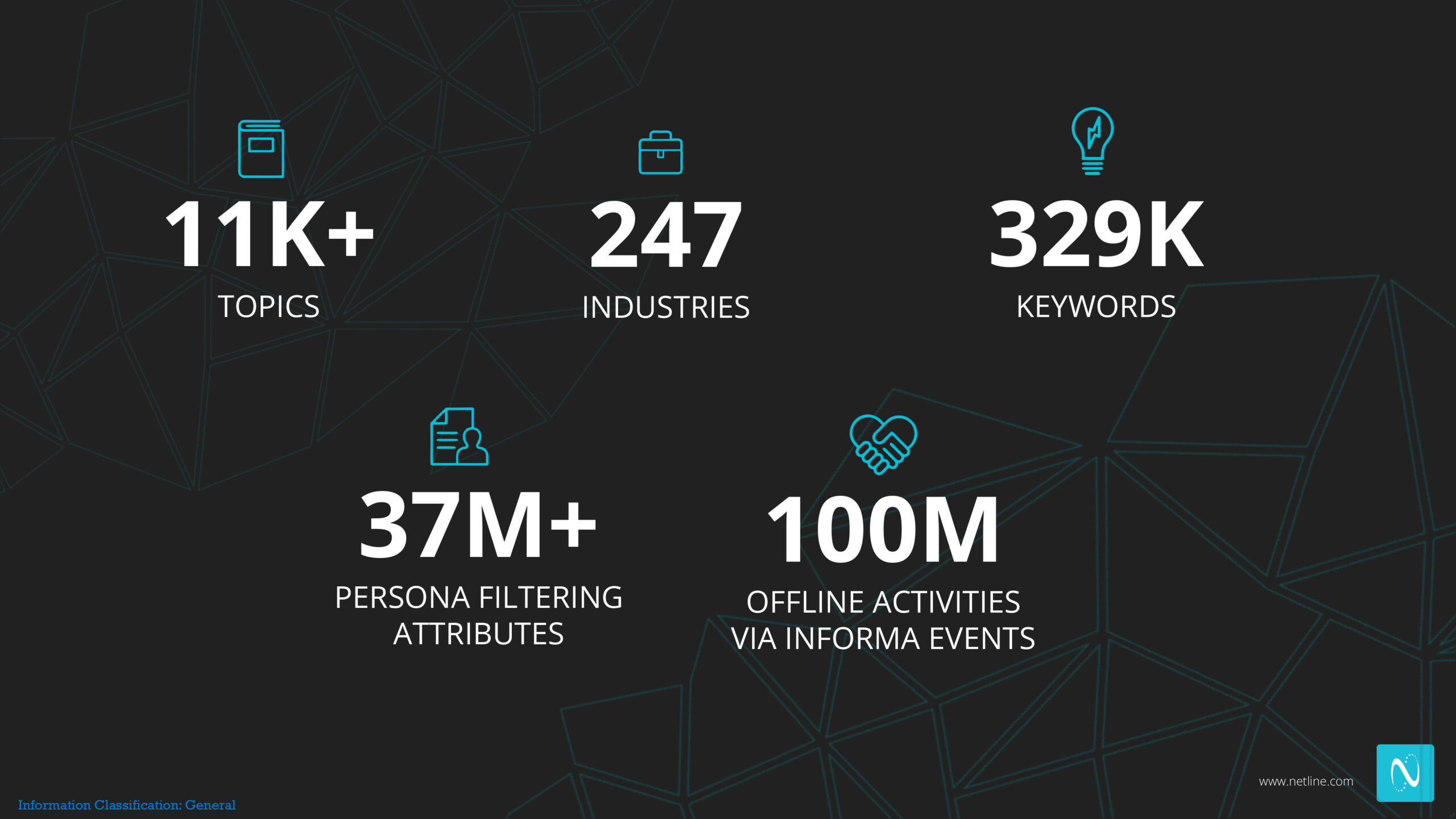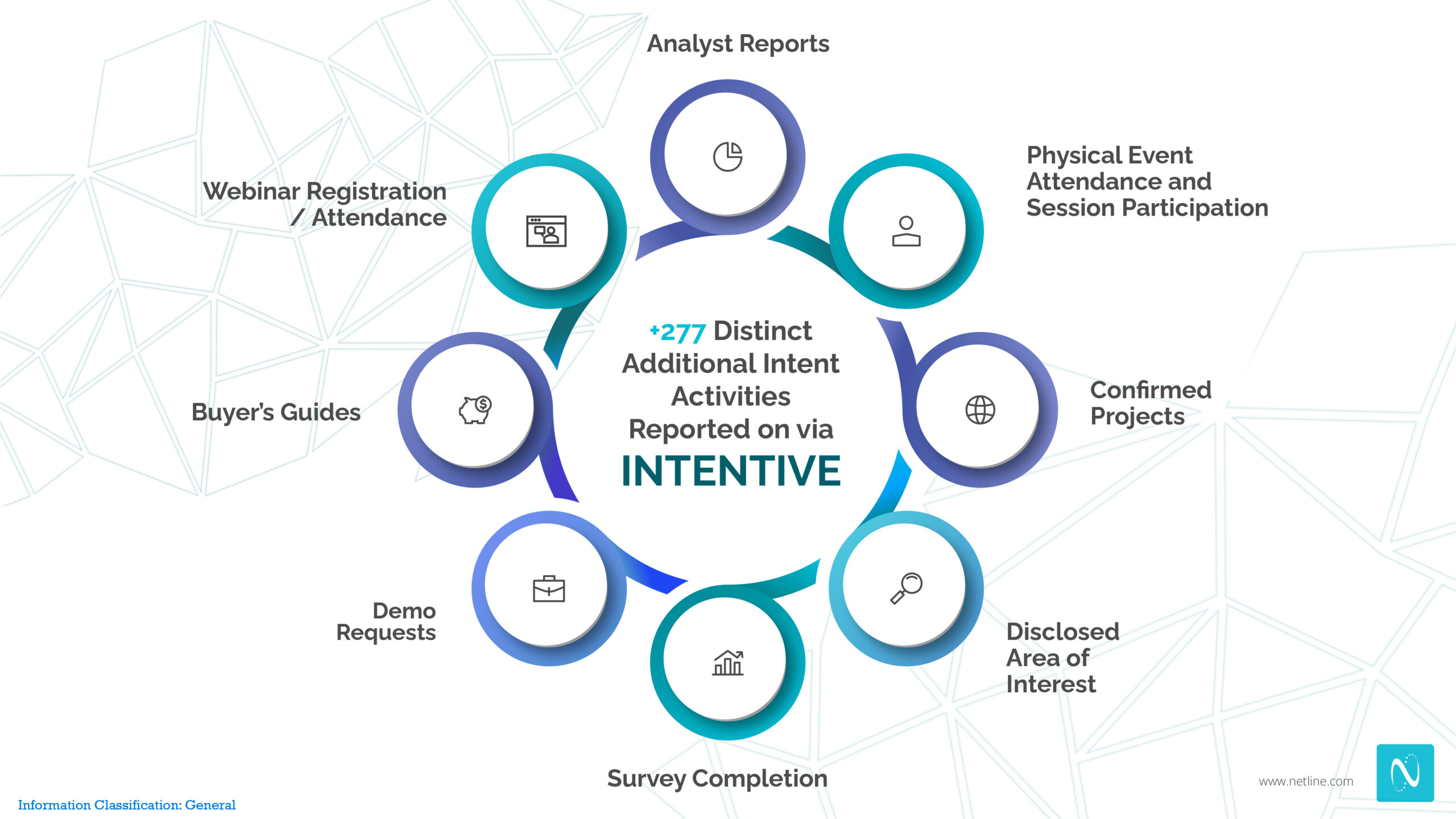
Lead generation, aligning with sales, measuring marketing ROI, martech integration, and data analytics were the biggest pain points B2B marketers faced based on my informal workshop surveys.
We tend to tackle these challenges as five individual initiatives. It has a lot to do with different groups owning them within the company. The truth is, we should treat them as ONE initiative – demand generation.
Everything is connected in the digital marketing world
Think about it. If you address lead generation from the top of the purchase funnel to the bottom, you’ll also cover sales collaboration and sales enablement.
The complete lead generation journey will force you to tackle data flow and integration from platform to platform. Ultimately, you have no choice but to track marketing ROI down to the sales closure stage.
See, how everything is connected to lead generation strategy?
Although demand gen is a messy process, let’s focus on what we can control
As B2B marketers, you may not own all these initiatives. However, you can control what you do best – finding clues about your prospects’ buying interests. This is where the buyer intent data comes into play.
So, where can we find intent data?
Use Your Own First-Party Data
Source Third-Party Data
Either way, it requires you to evaluate your data sources to determine buyers’ intentions.
First-Party Data – Start gathering customer information
Through various demand gen campaigns, contact forms, event attendee scanning, and website content downloads, you have lots of first-party data at your fingertips.
If the data is tracked and maintained in one place, great! You can find account-and-buyer-specific information to gauge buying interests and determine the next steps of engagement.
As many companies know, customer data points from various campaigns and channels are fragmented and unstructured; you either need to pull data manually or semi-automatically from different places, or you deal with gaps.
Even with customer data consolidated in one place, marketers also face data-decay challenges. For example, prospects exchanged conversations with our sales team six months ago and attended our webinars three months ago, but we don’t have any visibility about the prospects over the course of the past three months.
Have they attended other industry conferences, or engaged with other content outside our website? Have they continued doing research on the products and services we offer?
Third-Party Data – Get additional insights on prospects
Another way to get additional insights on prospects is to look at outside sources. Many media, publishing, or data companies offer customer intent data to either enrich your first-party data or allow you to determine your prospects’ current buying status or intent.
With so much prospective information out there, you need to think through what information you’d like to gather that will give you insights to either help your marketing outreach or sales teams.
Here are some criteria or questions to ask as you evaluate third-party intent data usage:
- Do you have the transparency into WHO is expressing intent within an account and WHAT they are doing specifically?
- Do they have access to the right audience populations to match your Ideal Customer Profile (ICP)? See the definition of ICP in this video.
- How do they track or refresh buyer and account activities in their platform?
- What buyer and account activities are tracked? (Ex: physical and online events, surveys, demo requests, webinars, areas of interest disclosures, confirmed projects, etc.)
- What are the attributes and topics to filter and analyze your target audiences’ interests?
- How long do you have to wait before intent insights start getting delivered?
- Can the data be exported or integrated into your marketing automation or CRM platforms?
- Does this data exclusively sit in a marketing silo or can your sellers act upon it in real-time as well?
- If you choose to use a platform, can you run campaigns or engagements directly from that platform?
- What do the dashboard and analytics look like? Can you use them as your marketing KPIs?
- Is this something that sales can also use?
- Is pricing based on licenses or fixed fees? If licensed, are there hidden costs for additional seats?
- How is the onboarding process?
- What does customer support look like after onboarding? (Ex: email, chat, or phone communications.)
You need to think through the various data points that will offer you adequate clues into your prospects’ buying intent.
As to what data points will work for you, that depends on your audience’s pains, aspirations, topics that interest them, technology needs, and more. Understanding customers’ intent relies on how much you understand them and what makes them tick.
Recently, I was given a demo of NetLine’s latest platform, INTENTIVE, the only buyer-level intent platform. This platform addresses many questions I addressed above. NetLine is also part of Informa, which delivers >500 B2B events at various industries and verticals. Intensive pulls real-time customer data from Informa events and other customer engagement activities – a large pool of customer engagement data sources.
This platform allows you to query and search your customers based on 11,000 topics, 247 industries, 329,000 keywords, and 37 million persona filtering attributes, including but not limited to job areas, job functions, job levels, topics, company names, company sizes, and much more.
NetLine told me that all INTENTIVE customers start with buyer insights captured from the past three months. No need to wait 30-60 days before extracting value from their platform. They offer many ways to query and filter your buyer-level information with a projected intent score that allows gauging the intent at both the buyer and account levels.
As INTENTIVE feeds you buyer-level insights, you can then action those insights with hyper-targeted lead gen campaigns directly within the product. As a result, your lead gen campaigns become far more cost-efficient and effective.
In Summary…
For intent data, I encourage marketers to gather first-party information as much as they can through their campaigns, webinars, events, website interactions, and various marketing activities. Assuming you have all the data in one place, you can evaluate and analyze engagement data to determine the interest level of your prospects.
The main question to ask is, are your internal data points enough to assist you and your sales team in quantifying their interest level and intent?
In reality, your buyers are conducting a massive amount of research beyond your own content…you should aim to understand their whole buyer’s journey and not just what they do when they engage with your brand.
NetLine’s platform helped me realize the intent landscape can be expanded by incorporating additional insights to your buyer and account level transparency.
Knowing that a target account is expressing intent is directionally helpful. Knowing WHO within a given account is expressing intent and more importantly, what that person is doing, is transformational.
Your prospects have many digital footprints – interactions with your company and outside of your company. Some of these footprints can unravel “Aha!” moments, while some may lead you nowhere. You won’t know which digital footprints bear the insights in advance.
To understand intent data, you need to test different data points,. Then come up with a methodology that will work for you.
In the meantime, if you are interested in finding out more about Intentive from NetLine, you can sign up for a free 14-day trial. Check out this fun eBook about buyer-level intent data –> the customer truth is out there.
This post was sponsored by NetLine, but the opinions are my own and don’t necessarily represent NetLine’s positions or strategies.





